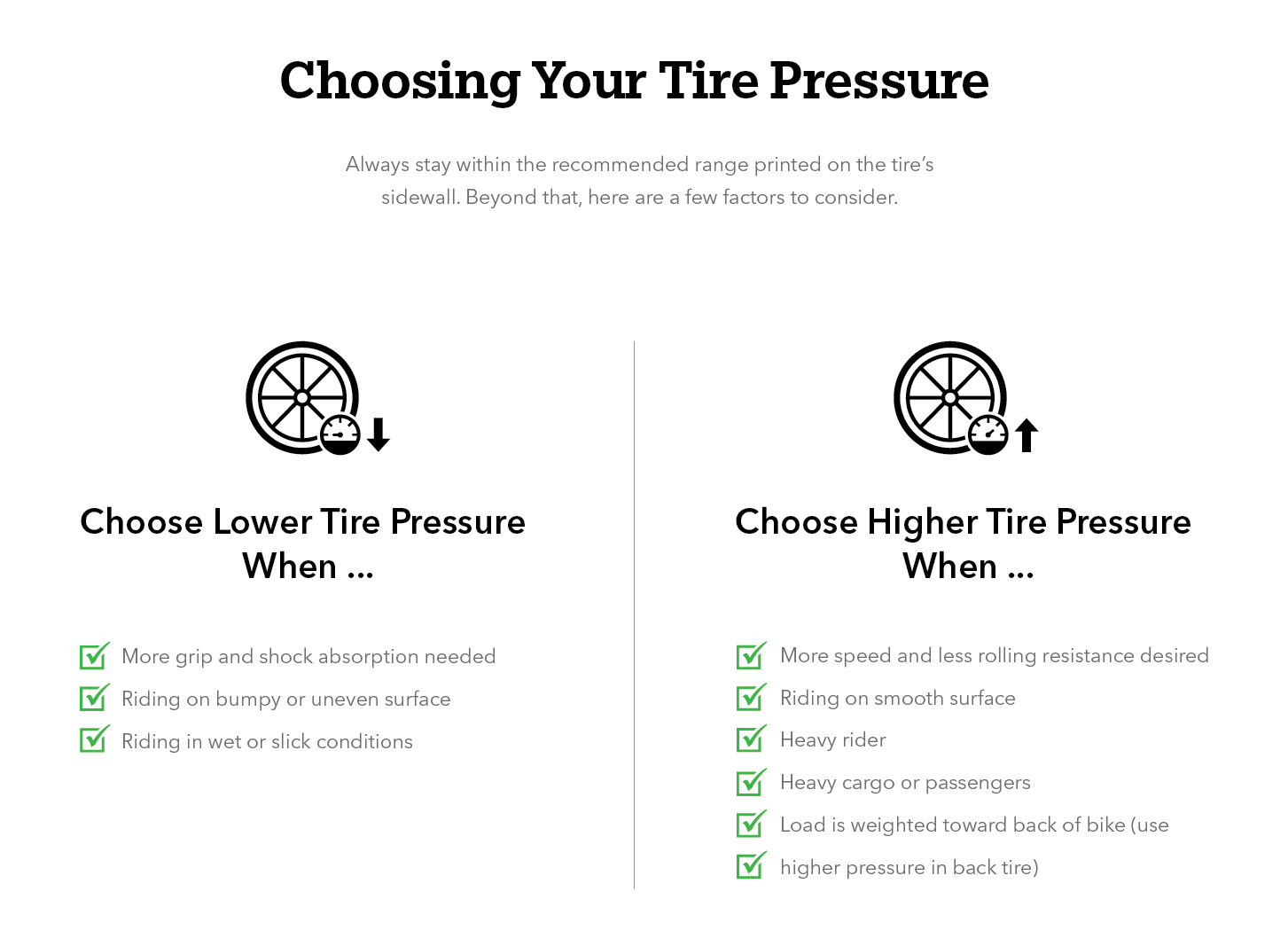
How to Properly Pump Your Tires
Proper tire pressure is key to a well-functioning bike—so it's smart to think about the amount of air in your bike tires.
In this article, we'll discuss why tire pressure matters, what tire pressure to choose, and how to pump your tires.
Why is tire pressure important?
To get the best performance from your bike, you must properly inflate your tires. This ensures a fast, smooth ride and helps avoid flat tires.
How often do I need to check my bike's tire pressure?
All tires leak air over time. That's why it's essential to check your tire pressure and pump your tires regularly.
The rate of air loss depends on the original tire pressure and external factors such as temperature (if it suddenly gets cold outside, you'll likely notice a drop in pressure). There's no hard-and-fast rule about how often you need to pump your tires—the important thing is to get into a routine and stick to it.
We suggest using your thumb to check that your tires are firm before every ride, and breaking out your floor pump to top off your tires once per week.
What tire pressure should I choose for my bike?
As with any bicycle tire, the recommended tire pressure range is printed on the tire's sidewall. When you pump your tires, always choose a tire pressure somewhere in this range.
Within this range, several factors influence your ideal tire pressure.
Riding Surface
In general, a higher tire pressure provides less rolling resistance and makes it easier to carry your speed. A lower tire pressure offers more grip and shock absorption for a more comfortable ride.
So, if you'll be riding on a smooth, consistent surface (such as a well-paved road), it might make sense to choose a higher tire pressure. If you'll be riding on a rougher surface (such as a bumpy road), consider choosing a tire pressure on the lower end of the range.
Weather Conditions
As mentioned above, lower tire pressure increases the tires' ability to grip the road. This extra traction can come in handy in wet or slick riding conditions. If you know you'll be riding in wet weather, consider choosing a lower tire pressure.
That being said, extreme weather conditions sometimes require more than a tire pressure adjustment. If you'll be riding in icy or snowy conditions, you may want to swap out the stock tires for a pair of studded winter tires.
Rider and Cargo Weight
Put simply, the more total weight is on the bike, the higher the tire pressure needs to be. But remember, don't go beyond the recommended tire pressure range printed on the tire's sidewall.
Front vs. Back Tire Pressure
When inflating your tires, it also makes sense to think about how your cargo's weight is distributed on your bike.
For example, if you have a GSD and regularly carry two children and a week's worth of groceries on your rear rack, there's a lot more weight on your bike's back wheel than on the front wheel. That means you should run the back tire at a somewhat higher pressure relative to the front tire.
Avoid Overinflating Your Tires
As tempting as it may be to aim for the maximum tire pressure printed on the sidewall, avoid overinflating your tires.
Whereas properly inflated tires absorb shock, overinflated tires transmit bumps from the road to the rider—which makes for a rougher and slower ride. Overinflated tires can also make your bike harder to handle and increase your risk of getting a flat.
Experiment with your tire pressure to see what pressure provides the most comfortable ride and the best handling. But remember, even once you find your ideal pressure, it may change according to the factors mentioned above.

How do I inflate my bike tires?
Inflating your bike's tires is easy once you get the hang of it. Just follow these steps:
- Grab your pump. Ideally, your pump should have a built-in pressure gauge.
- Know the tire pressure you need. Check the recommended range printed on the sidewall of the tire, and consider the factors discussed in this article before you start to pump.
- Remove the cap from the tire valve.
- Securely attach your pump to the tire valve. Your pump will have either a small lever that flips up and down or an internally threaded screw top. These mechanisms keep the pump's head in place while you pump to prevent air leaks. If the air seems to be coming out of the pump instead of going into your tires, you may need to detach and reattach your pump head to get a better seal.
- Pump to your ideal pressure. Using the gauge on your pump as a guide, pump the tubes up to your desired pressure.
- Detach your pump from the tire valve.
- Replace the tire valve's cap. This isn't actually necessary to keep air from leaking out, but since the cap helps keep out debris, make sure you replace it.
- Enjoy your ride!